I originally wrote this blog for Night Owl TV as a part of their Classic Film Zone. I’m reprinting it here with their permission. For more from Night Owl TV click here.
Film Noir is one of the most misunderstood genres of cinema. It’s so misunderstood that its referred to as a genre, when it actually encompasses many genres. Film Noir is really more a style of film making rather than a genre. Similarly, to Animation (Sing is a musical and King Fu Panda is an action/comedy, The Iron Giant is action/sci-fi) there are several different genres that could find a home within that style of film making. Yes, there are certain motifs that fall within it, like cops, private eyes and femme fatale’s, but you couldn’t look at films like Sunset Boulevard, Mildred Pierce, The Killing, or The Maltese Falcon and think that any of them share a genre, and yet they’re all referred to as Film Noir. In fact, the term Film Noir wasn’t even widely used until the 1970’s, a couple of decades after many of these films had first been released. When these films came out in the early 40’s through the mid 50’s, most of them were referred to as melodramas.
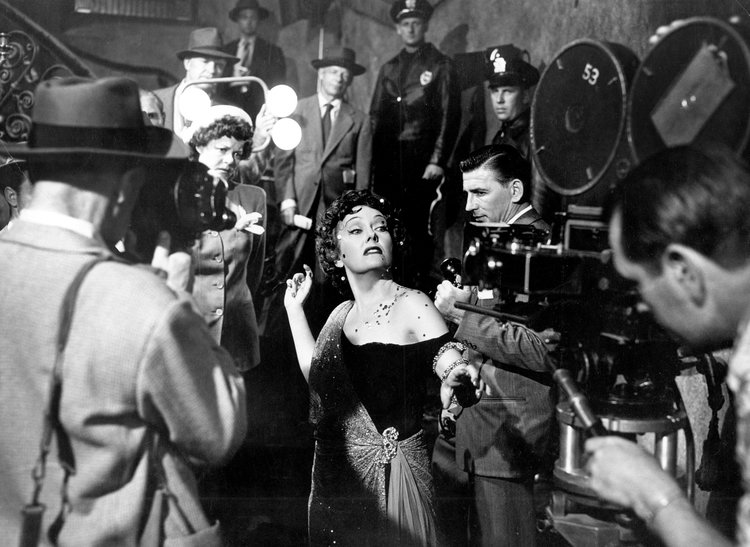
Gloria Swanson in Sunset Boulevard (1950)
There are several motifs that make Film Noir such a compelling style of film making. The first thing that many people think of is the femme fatale. Many of the greatest Film Noir have a strong female antagonist who leads a man with loose morals astray. Another popular component is the extreme light and shadow that was heavily influenced by early German expressionism film making of the 1920’s. With a couple of notable exceptions, most of the films take place in gritty, urban settings, and those qualities often inform the types of characters and situations that we’ll be experiencing as the audience. The case could be made that Los Angeles and New York are often, themselves, characters in these melodramas. Each of those cities carries with it a vibe and a personality that often plays a role in the stories in which they’re set.
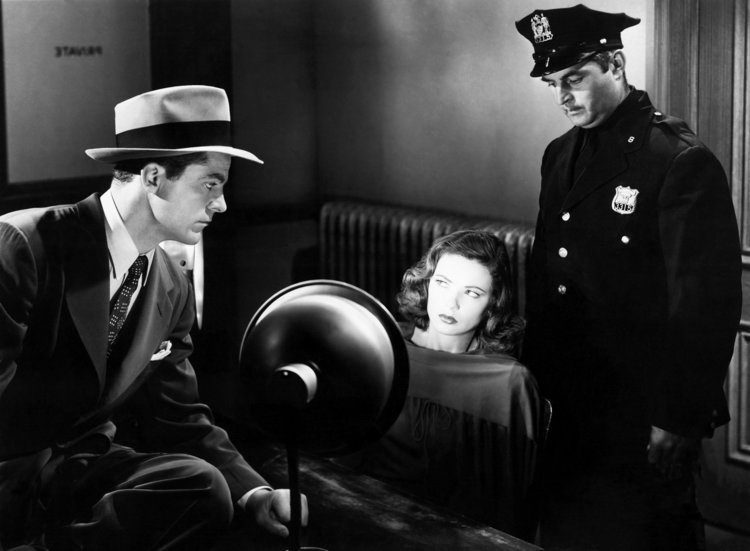
Gene Tierney in Laura (1944)
Also, many of these films involved subject matter that was frowned upon by the Production Code and the Catholic League of Decency, so the producers of these movies had to be very creative about how they got their subject matter in. That led to a lot of subtext and creative cinematography that helped to make these films as timeless as they’ve become.
Why then, did the late 50’s spell the end of the Noir period? The answer likely lies in two places…
Technology in film making was taking the art to new places with color becoming much more prevalent and wide screen formats becoming a necessity to compete with the growing popularity of television. Since color and wide screen were so new, they were often used to show how polished and beautiful the world could be, and the often dirty and gritty settings of Film Noir just didn’t translate to that format.
Also, by the time the sixties rolled around, a new and freer style of storytelling was happening. Film Noir relied a lot on nuance and subtext, those notions were becoming less necessary and more corny and square as more “honest” films like Midnight Cowboy and Bonnie and Clyde could show a level of grit and depravity and violence that made Film Noir feel tame by comparison.
So where does one begin? If you’re a Film Noir novice, here are our top 7 films to whet your appetite for a deeper dive into this wonderful, thoughtful and dramatic style of film making.
7. A Touch of Evil (1958)

Some people call this Orson Welles gem, the last great Film Noir (at least from the classic time-period of the early 40’s to the mid 50’s). In many ways, this was the last of a dying breed, and it used many of the classic motifs with aplomb. The opening shot is a masterful long trucking shot that would make a film maker like Martin Scorsese proud. The contrast between light and shadow is stark in this film, but what’s great about it is that it doesn’t merely exist for its own sake. The harsh lighting was used effectively to reveal story moments and to create a level of discomfort in the mood of the audience in key scenes. Although the film lacks the femme fatale motif, it effectively uses the motif of crooked police officers using their power to help corrupt the overall systems. With its depictions of drug use and willingness to show violent acts that hadn’t been seen on screen before, A Touch of Evil acts as a bridge between the classic Film Noir and the more realistic and violent and edgier films that were only a decade or so away.
6. The Third Man (1949)
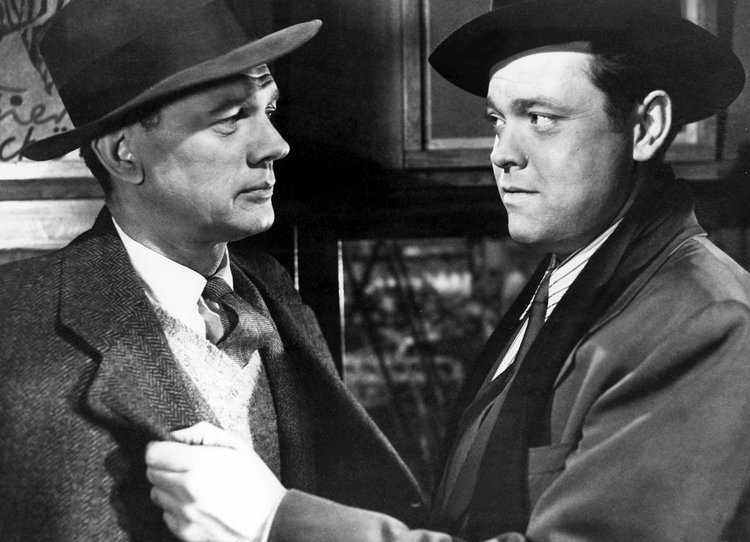
Another Film Noir starring Orson Welles, but directed by Carol Reed, this film explores the ideas of loyalty and relies heavily on German expressionistic lighting, as well as the use of “Dutch Angles” by cinematographer Robert Krasker. This is another film that uses hard contrasts between light and shadow to effectively advance the story and set the mood. Taking place in post-war Vienna, it has a European grit that made this film look unique among other Film Noir. Also, the climactic chase scene is tense and beautifully shot, the dialogue is biting and curt, and the overall story is riveting and borders on heartbreaking.
5. The Postman Always Rings Twice (1946)
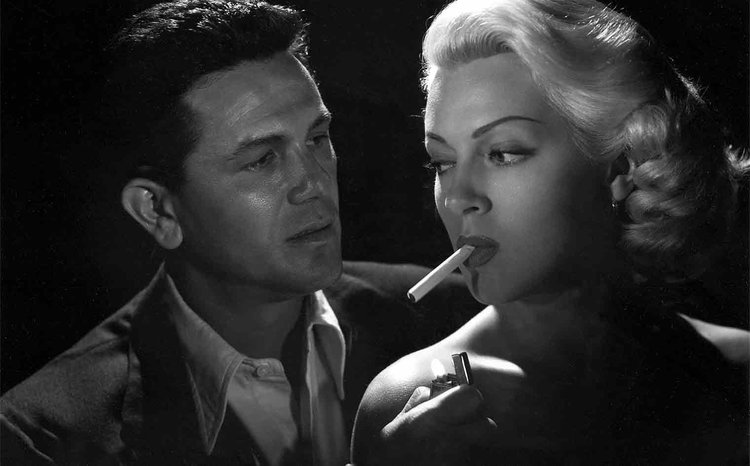
Film Noir always has an undercurrent of sexual tension, but John Garfield and Lana Turner couldn’t help but bring that sexual tension to the forefront in this psychological thriller based on the novel by James M. Cain. This is a story about infidelity and how the consequences for your actions will always catch up with you (and often in tragic ways that you won’t expect). There isn’t a ton of German expressionist contrast in light and shadow in this film, at least that’s visible on camera. The contrast between light and dark lies solely in the characters and their actions and their desires. Foreshadowing in the script leads to moments of palpable tension and events that are planted early in the story are paid off in tragic ways.
4. Mildred Pierce (1945)

Possibly the least Noir film on the list, Mildred Pierce still has many classic Noir components. Directed by Michael Curtiz (Casablanca), Mildred Pierce follows the title character as she believes she’s setting herself up for a lifetime of success after leaving her husband, but is actually slowly and methodically heading for disaster. Many Film Noir films involve the self-destruction of the main character and Joan Crawford delivers a performance for the ages as a woman trying to make it in a man’s world, but is constantly betrayed by the very men she should be relying upon. In an interesting flipping of the script, it is Mildred who inches towards self-destruction at the hands of male fatales, although there is one notable femme fatale in this film, and her revelation will break your heart.
3. The Maltese Falcon (1941)
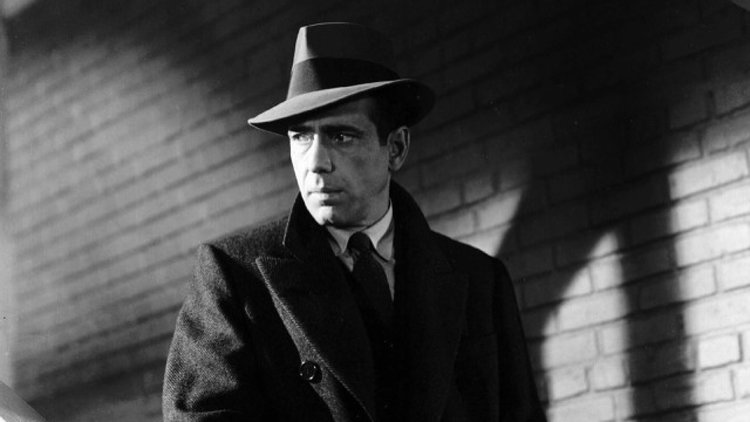
Perhaps the prototypical detective movie, John Huston directed Humphrey Bogart as Sam Spade, the jaded private detective who finds himself on the trail of a legendary treasure that may or may not exist. With a gaggle of nefarious characters and an adequate femme fatale, Sam Spade turns out to be one of the few Noir protagonists to avoid the pitfalls that other men so easily fall into. As the mystery unravels, the story takes us to some dark places, but shows us that it’s possible to come out okay in the end.
2. Out of the Past (1947)
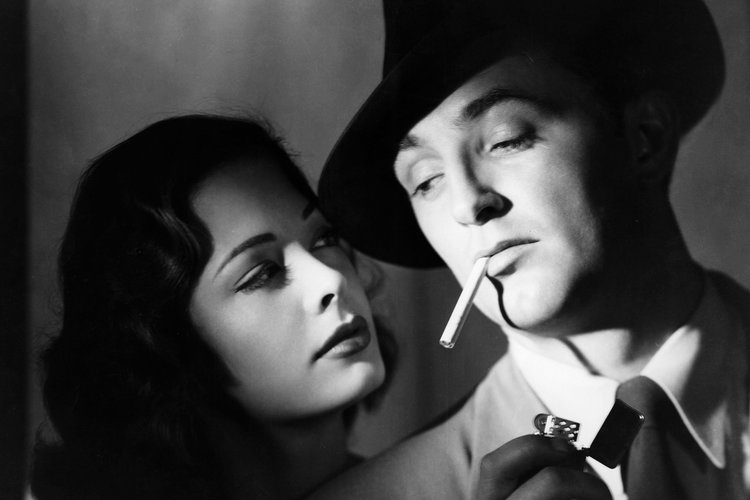
Robert Mitchum stars in this film as Jeff, a simple filling station owner with a dark past that he would love to leave behind him. The problem is that a chance meeting leads him back to a gangster named Whitt (Kirk Douglas), who he betrayed years ago for the love of femme fatale Kathy (Jane Greer). She had betrayed him by shooting his partner down in cold blood. This all creates an intricate web of a story that can only end one way. It’s about vindication and loyalty and ultimately doing the wrong thing as a means to the right ends. This is a deep and complex film that is filled with surprises right up to the very end.
1. Double Indemnity (1944)
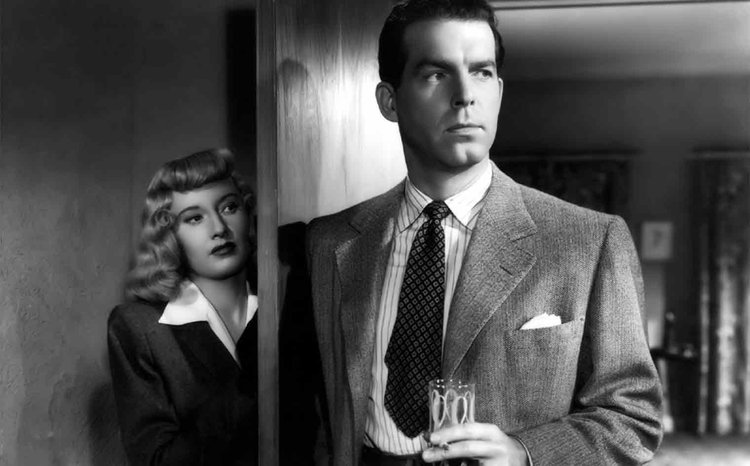
Billy Wilder’s masterpiece that stars Fred MacMurray as the doomed insurance salesman Walter Neff, and Barbara Stanwyck as perhaps the greatest, most prototypical femme fatale in the history off Film Noir. It is not hyperbolic to say that every femme fatale must be compared to Stanwyck’s brilliant portrayal of Phyllis Deitrichson. She ensnares Walter into her web of deceit that leads Walter to kill Phyllis’s husband so that she can collect the insurance money. This film has all of the Noir components from the aforementioned doomed hero and femme fatale to the German expressionistic lighting to the simple motif of bad people doing bad things that end badly for them.
Indeed, Double Indemnity should be high on anyone’s list of classic Film Noir movies to see!